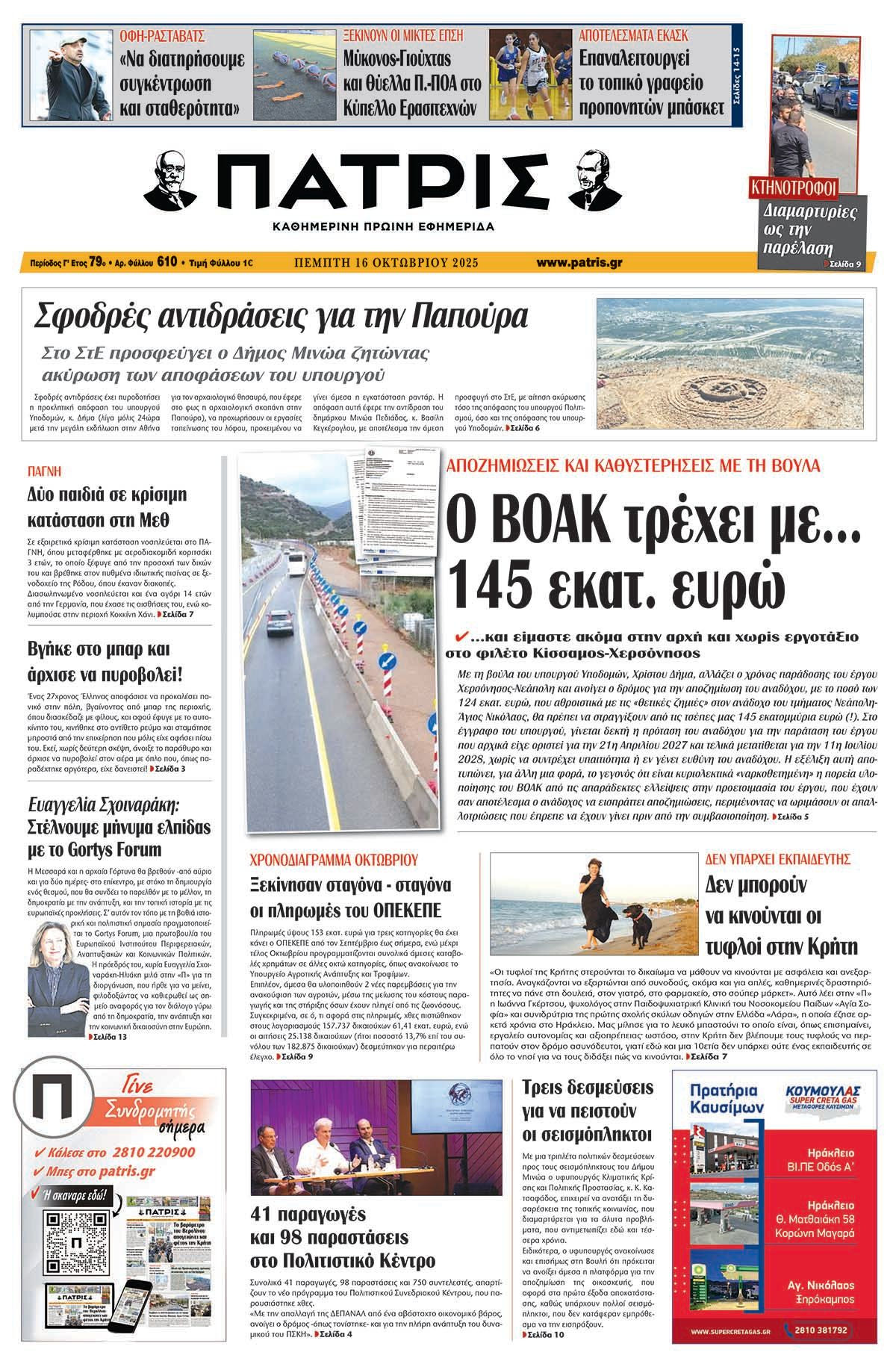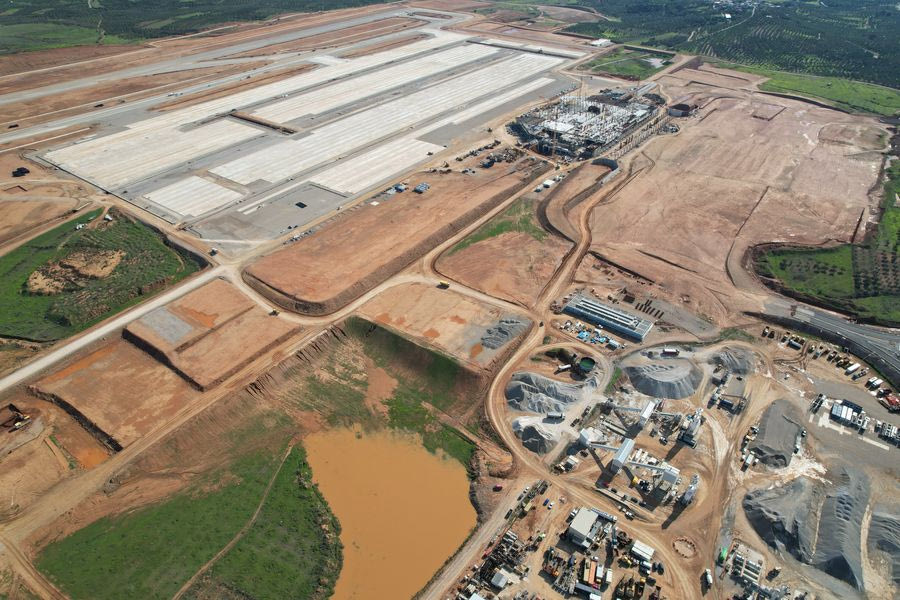To handle more than double the amount of passenger traffic, which is expected to turn the destination’s carrying capacity upside down and make Crete a 12-month tourist destination, Heraklion is preparing with the start of operations of the new airport in Kastelli, which, according to the official timetable, is scheduled for February 2027.
The approved timetable foresees that the trial operation of the airport will begin in August 2026, while the transfer of operations from “Nikos Kazantzakis” will be completed by February of next year.
The new airport’s capabilities, due to building infrastructure and the aircraft parking spaces offered, can more than double the arrivals and departures, which at the existing “Nikos Kazantzakis” airport amount to 9.5 million. Specifically, it is estimated that during its 5th anniversary of operation, the airport in Kastelli can handle 15 million arrivals and departures.
There are reasonable concerns about whether the additional number of visitors will further pressure the destination’s infrastructure. Experts say that the island needs infrastructure to manage this exponential increase in visitors in terms of transport, water supply, sewage, and beds.
Specifically, the municipality of Pediados, in whose territory the new airport is located, will be called upon to manage in 2027, from 25,000 people today, 10 million passengers who will travel to and from the airport, including transit flights, increasing the need for transportation, catering, accommodation, etc.
The positive thing, the same sources say, is that the VOAK project is underway, which, in combination with the new airport, will help in the evolutionary process of Crete.
12-month tourism with direct flights from the USA, India, Canada, China
At the same time, the new airport is expected to breathe new life into Crete’s tourism, with Heraklion becoming the second destination in Greece, after Athens, which will receive direct connections from major international and long-distance markets. As the president of the Heraklion Hoteliers’ Association, Mr. Nikos Chalkiadakis, points out in his statements to Tornos News, after February 2027 direct air connections are expected certainly from India but also from the USA, Canada, and China. Mr. Chalkiadakis emphasizes that in this way, and certainly after 2030, Crete will be transformed into a 12-month tourism destination.
While the number of hotel beds in Crete, which currently stands at 200,000, is not sufficient to serve the accommodation needs of additional visitors, the president of the Heraklion Hoteliers Association estimates that the growth rates of new hotel units will have freed up around 15,000 additional beds in the island’s accommodation market by 2030.
Regarding the problem of water resources adequacy in Crete, in view of the increased traffic through the airport in the future, Mr. Chalkiadakis emphasizes that the Region of Crete is seeking new solutions in addition to drilling, mainly through desalination of seawater, and expressed the assessment that the issue will be resolved to serve the surplus of visitors. Similar efforts are being made by hotels, mainly with seawater in the swimming pools, initially creating reactions from British travel agencies, without, however, recording any impacts on tourism.
But in the wider area of the airport, it does not seem that there will be any water supply issues, as the municipality and DEYAH, as well as based on studies, are giving assurances that the increased demand will be met through drilling.
In terms of covering the airport’s energy needs, the installation of a substation is expected in the next phase by the State, while there are thoughts that these needs will be partially served through renewable energy sources.
The total construction cost amounts to 480 million euros (conventional auction and project costs) and 105 million euros of additional fees due to an increase in the size of the terminal, and it does not include air navigation equipment, which falls under the jurisdiction of the Civil Aviation Authority (CAA).
What will the new airport look like
According to the ratification of the concession agreement, with the concessionaire being the TERNA-GMR consortium and the construction project at TERNA, the works include the implementation of:
– the new Chersonissos interchange (at VOAK)- a road connecting the airport with VOAK at the height of the Chersonissos settlement, 18 km long. It will involve an 18 km closed motorway
– rehabilitation works on the existing Chersonissos-Kasteli national road- a road connecting the airport with the Arkalochori-Viannos road, 5 km long
– a new Kasteli perimeter road, 1.5 km long and- an external perimeter network of the airport with the upgrade of existing roads, with a total length of 20 km.The airport will have:
– 1 runway 3,200 m long. category according to ICAO 4E- 1 parallel aircraft movement taxiway of equal length
– 8 connecting taxiways of the runway with the parallel taxiway
– 2 connecting taxiways with the runway of the Military Airport
– aircraft parking area (APRON) with a total area of 400 acres
– 27 aircraft parking spaces of category according to ICAO C & 5+1 MARS type spaces of category according to ICAO E- 1 Terminal Building of 5 levels with a total area of 93,572 sq.m., almost 32% larger than originally designed, of which 13,000 sq.m. are commercial areas and 1,100 sq.m. are permanent exhibition areas
– 11 buildings/facilities of airport operation requirements: Control Tower, Fire Department, Police, Airport Maintenance, installation of ground handling companies, Energy Center, 150kV Substation, Water Tanks, Biological Treatment installation, fuel storage and aircraft refueling installation via an underground Hydrant system and airport waste collection installation
– parking and vehicle service areas- internal road network and- commercial areas of 400 acres.



